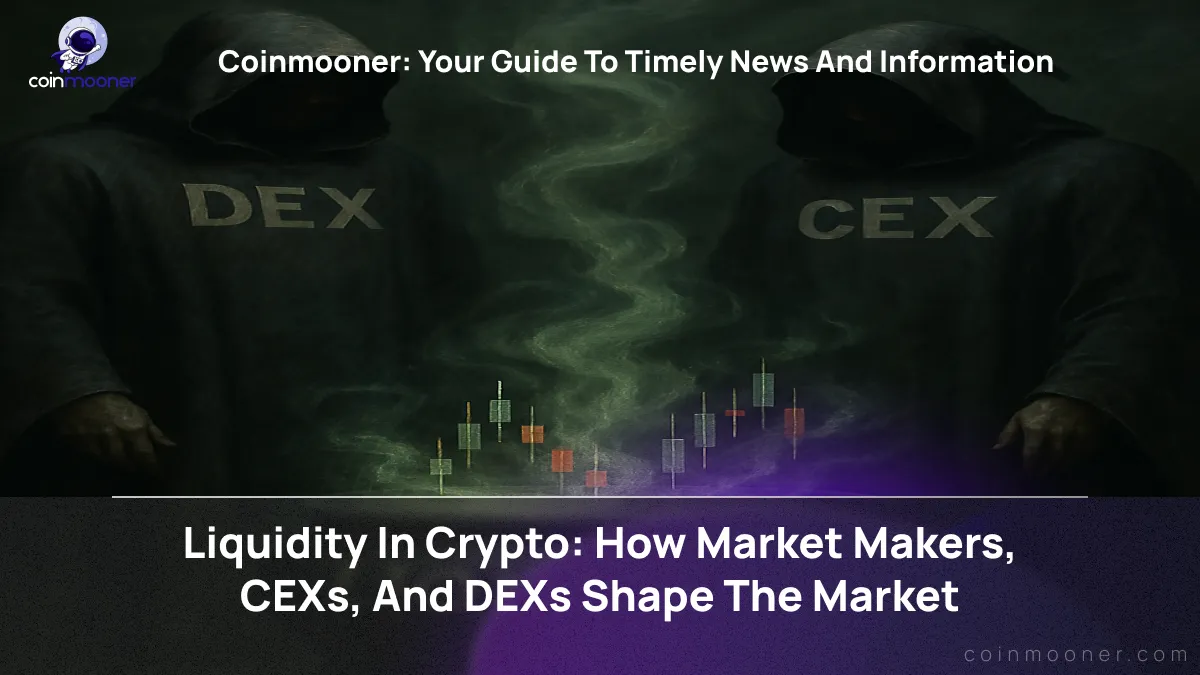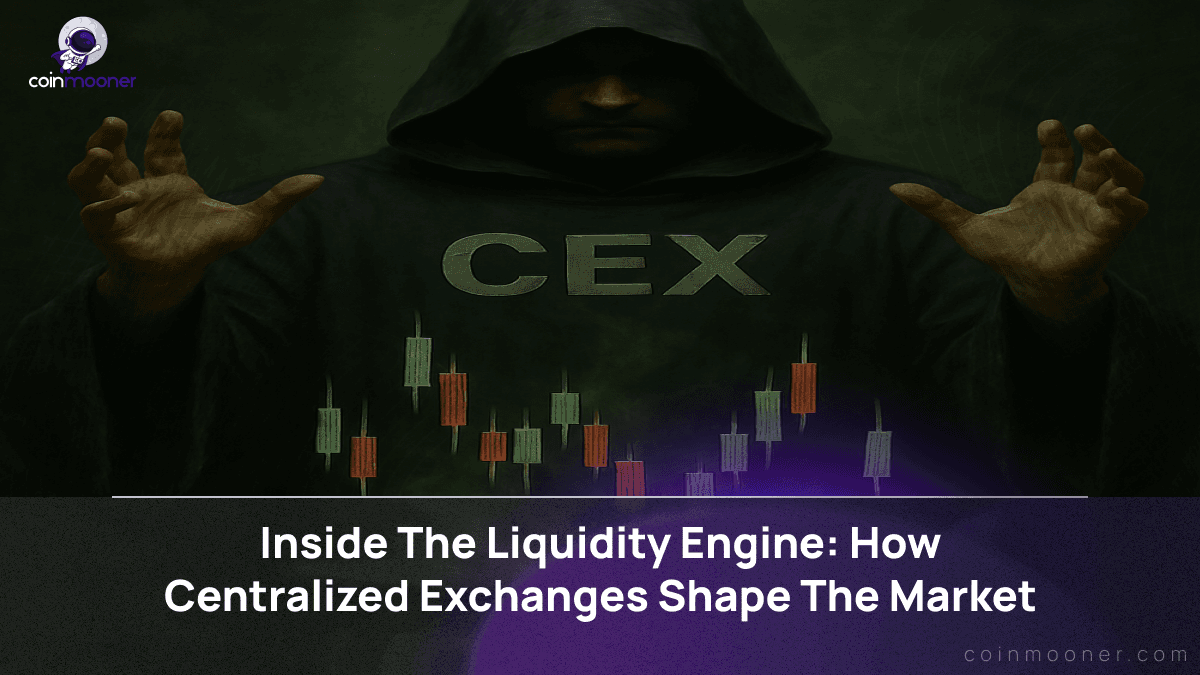Who Controls Crypto Liquidity? Market Makers, CEXs, and DEXs Explained

Liquidity is the lifeblood of any financial market, and in the cryptocurrency ecosystem, it plays an especially critical role. Without sufficient liquidity, it's impossible to quickly buy or sell an asset without significantly affecting its price.
But who actually provides this liquidity? The answer is more complex than it may seem: it's a mix of market makers, centralized exchanges (CEXs), and decentralized protocols (DEXs).
In today’s feature by the Coinmooner team, we’ll break down who’s responsible for what - and why these players are the true movers of the market.

Who Are Market Makers and Why Do We Need Them?
Market makers are market participants - typically companies or bots - that continuously place buy and sell orders, ensuring a narrow spread (the difference between bid and ask prices). In traditional finance, they’re usually large banks or high-frequency trading (HFT) firms. In crypto, well-known players include Wintermute, Jump Trading, GSR, and (before its collapse) Alameda Research.
Market makers profit from trading volume and the spread, but they also take on risk - especially in volatile markets. Without them, order books would be thin, and executing large trades would be slow and costly.

CEX: Centralized Exchanges and Liquidity Management
CEXs like Binance, Coinbase, OKX, and others are not just trading platforms - they’re powerful hubs for managing market liquidity. Here’s how they do it:
Liquidity pools through order books
Exchanges incentivize market makers to maintain tight, liquid order books - sometimes even paying bonuses or offering reduced fees to encourage participation.
Hidden subsidies and internal trading desks
Some CEXs operate their own trading desks that help stabilize markets during periods of extreme volatility by providing synthetic liquidity.
Listings and delistings as control tools
Exchanges have the power to "kill" a token by delisting it or significantly boost its liquidity simply by adding it to a high-volume trading pair or main pool.
It’s important to understand that liquidity on CEXs is centralized. If an exchange goes down - the liquidity often disappears with it.

DEX: Decentralized Exchanges and Automated Liquidity
On decentralized exchanges like Uniswap, Curve, PancakeSwap, and others, liquidity is provided differently - through automated market makers (AMMs). These are smart contracts where users deposit pairs of tokens, and in return, they earn trading fees.
Advantages of AMMs:
Accessibility and openness - anyone can become a liquidity provider (LP);
Decentralization - no middlemen involved.
Disadvantages:
Impermanent loss for liquidity providers;
Typically wider spreads and lower liquidity depth compared to CEXs;
Vulnerability to front-running and MEV (Miner Extractable Value) attacks.
Additionally, DEXs don’t have traditional order books. Prices are determined by formulas - which makes trading seamless, but not always efficient for large-volume transactions.

Liquidity in the crypto market is a complex ecosystem where every element is closely interconnected and dependent on each other. The main players shaping liquidity are market makers, centralized exchanges (CEX), and decentralized exchanges (DEX). Market makers traditionally focus on CEXs, where conditions are more stable and trading volumes are significantly higher. It is thanks to them that order books remain filled, and large trades are executed without sharp price swings. However, with technological advancements, some market makers have actively begun integrating into DEXs using mechanisms like RFQ, which improve execution and reduce risks. This allows them to expand their presence in the decentralized ecosystem as well.
DEXs continue to gain momentum, especially amid DeFi Summer 2.0 and the growth of Layer 2 solutions, offering users an open and decentralized alternative to centralized platforms. However, in terms of liquidity depth and tight spreads, DEXs still lag behind large CEXs, where the biggest market makers and institutional players are concentrated. Nevertheless, the trend toward liquidity decentralization is gaining strength, particularly noticeable with the emergence of modular blockchains and high-performance chains like Solana and Base. These changes indicate a gradual redistribution of liquidity control - from centralized exchanges to decentralized protocols.
Today, major centralized exchanges and institutional market makers remain the main "owners" of liquidity in the crypto market. They determine trading volumes, order execution speeds, and even the influence of specific tokens on the market. However, with the development of more advanced DEXs, Layer 2 solutions, and transparent liquidity management protocols, the centralized model is coming under significant pressure. There is every reason to believe that in the next few years, control over liquidity will gradually shift to smart contracts and decentralized systems, changing the familiar market landscape.
In conclusion, the Coinmooner team wants to emphasize the importance of using modern protection and security methods in the Web3 space. In the context of rapid growth and transformation of the crypto industry, every market participant must maximize the protection of their assets and data to avoid fraud and losses. Only in this way can one confidently operate and develop within this dynamic and innovative ecosystem.










